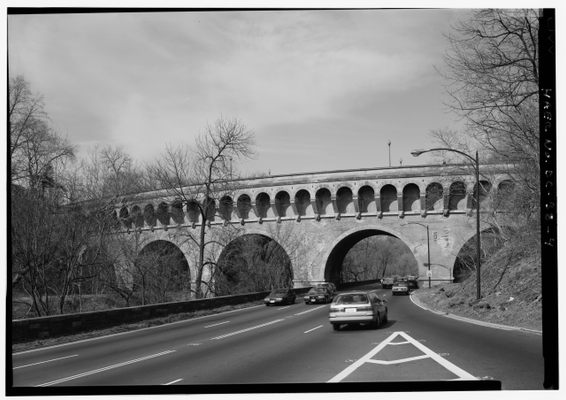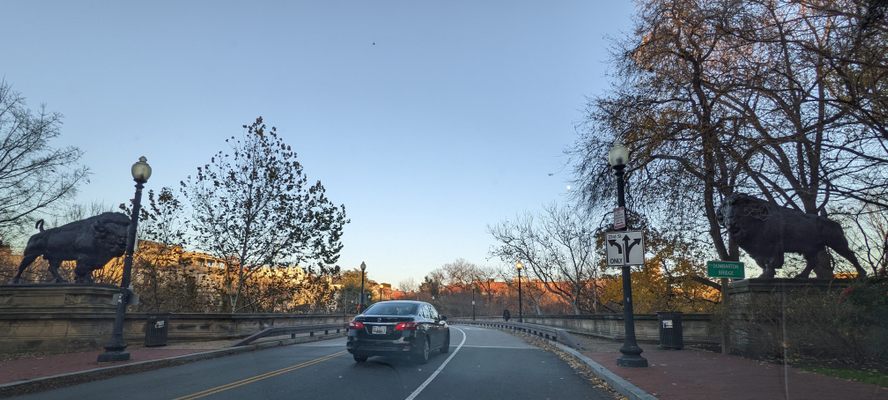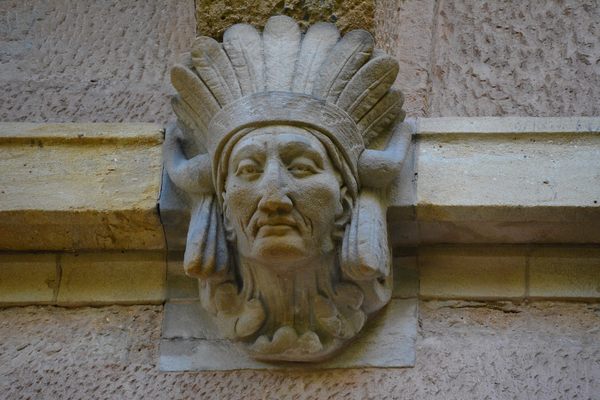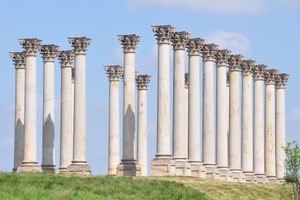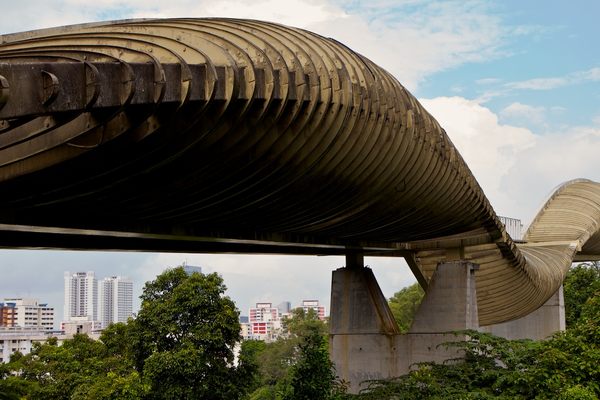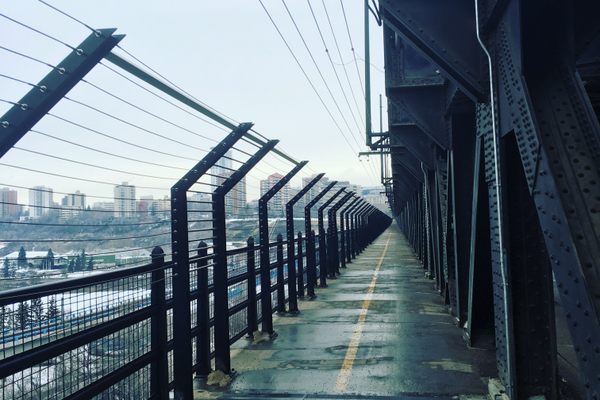About
The Dumbarton Bridge in Washington, D.C., carries Q Street traffic over Rock Creek, and may well have saved a significant portion of the creek from being filled in when it was built between 1914-1915.
The bridge beat out two other proposed solutions to reduce traffic on M Street in Georgetown, largely based on being significantly cheaper. One involved rerouting Rock Creek through a tunnel on what is now 27th Street, filling in the creek beds, and extending Georgetown's streets toward the center of the city. The other would have resulted in the existing Woodley Lane Bridge to Q Street instead of building the new bridge. Ultimately, neither of these ideas were nearly as cost-effective as constructing a new span, and thus, the Romanesque Revival structure was born.
The bridge is 261 feet long, 50 feet wide, and 65 feet high, and curves to the left as it turns toward the city. Known by several names, including the Q Street Bridge, and its most well-known moniker, the Buffalo Bridge, this historic masonry arch bridge features a quartet of massive buffaloes stationed on either side of each end. The span holds a special significance in showing the impact of the City Beautiful Movement - a philosophy built around the belief that beautification of urban areas would inspire civic pride and moral virtue among city residents, and promote a better quality of life. Critics decried the focus on aesthetics over social reform.
The bridge also has the distinction of being guarded by the four largest statues ever cast from a single piece of bronze. The mighty bronze buffaloes were designed by renowned sculptor Alexander Phimister Proctor, who also designed the lions that adorn the 16th Street Bridge.
In addition to the buffaloes, the bridge features Native American heads on its corbels, based on a living mask of Sioux Chief Kicking Bear that is displayed in the Smithsonian Institution's National Museum of Natural History. The heads are visible from beneath the bridge on each corbel under the small arches.
Related Tags
Know Before You Go
The Dumbarton Bridge was added to the National Register of Historic Places on July 16, 1973.
Community Contributors
Added By
Published
April 27, 2023


